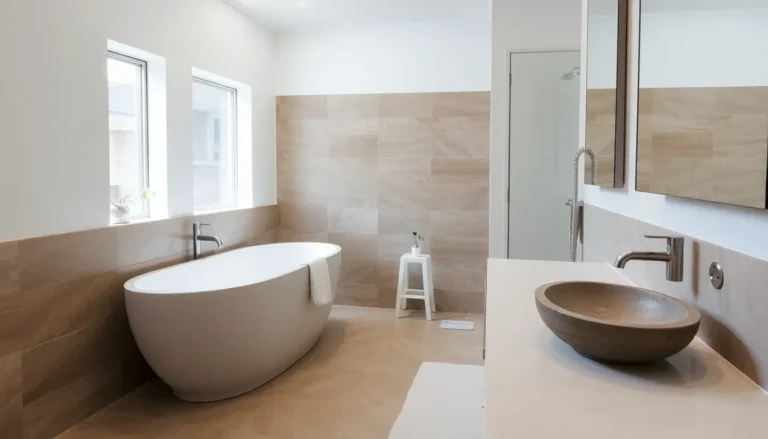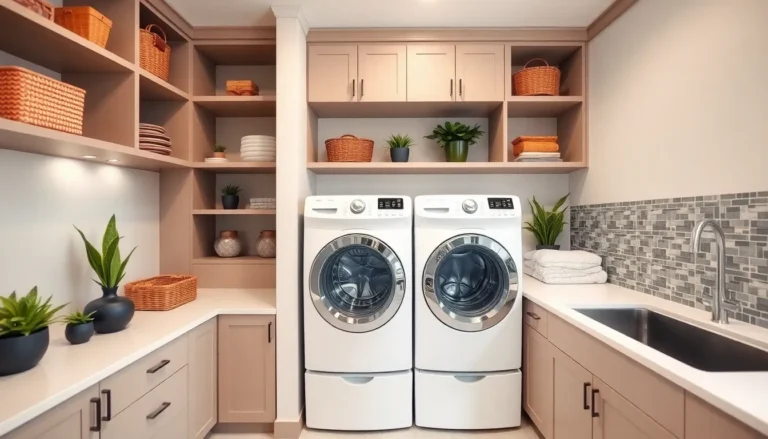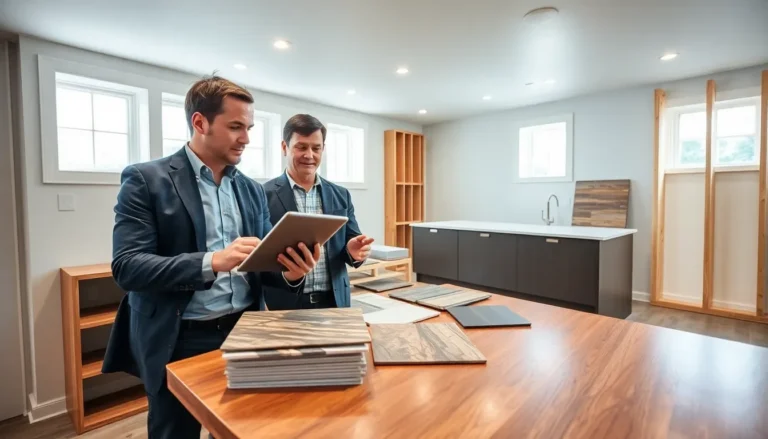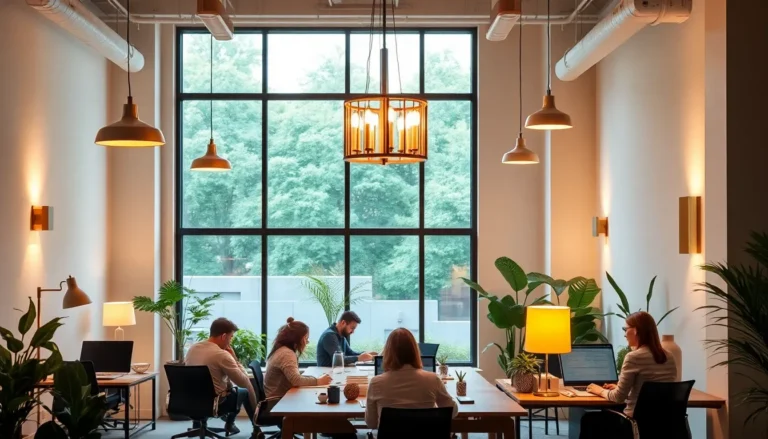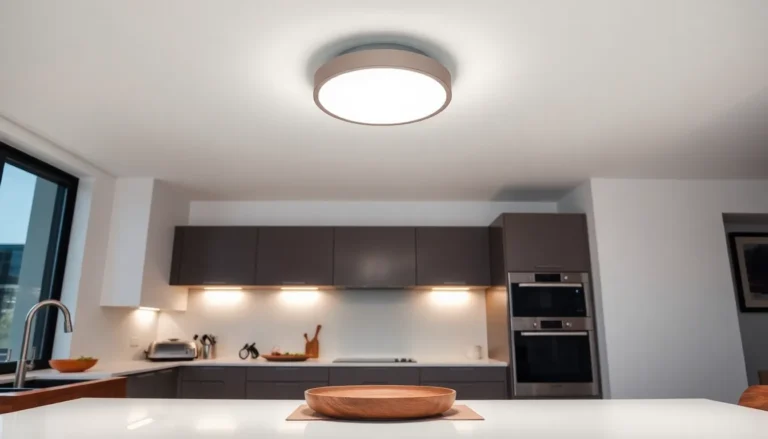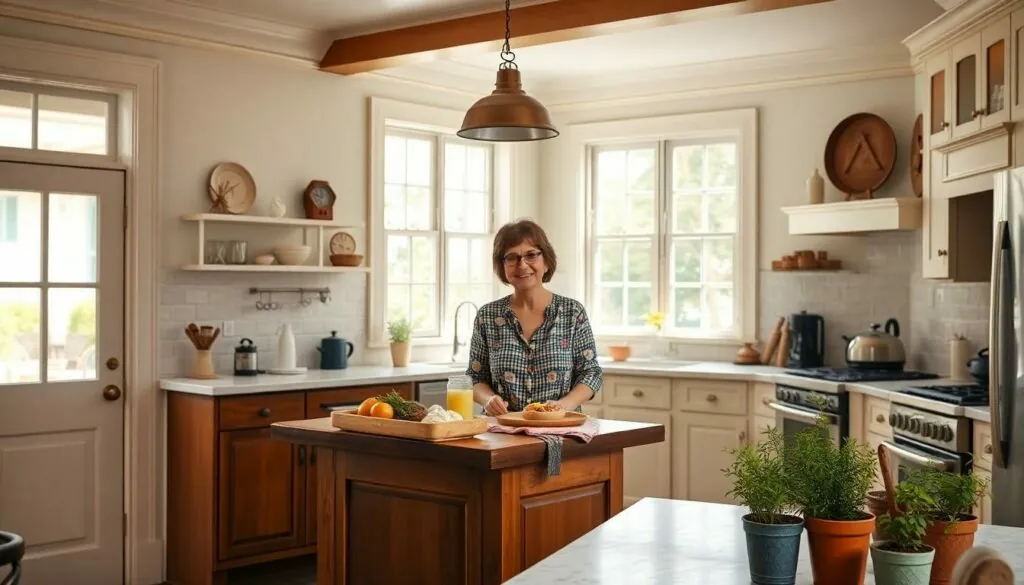Table of Contents
ToggleEver walked past a charming old house and wondered what secrets lie behind its weathered façade? Historical home renovations offer a unique blend of nostalgia and modern living, transforming these timeworn treasures into stunning abodes. Imagine sipping coffee in a sun-soaked kitchen that once hosted lively gatherings of yesteryear.
Overview of Historical Home Renovations
Historical home renovations involve the careful restoration and enhancement of properties with significant architectural and cultural value. These projects combine historical elements with modern amenities, allowing homeowners to enjoy contemporary comforts while preserving the charm of the past.
Renovating a historical home often requires an understanding of architectural styles and local history. Architects and designers work closely with homeowners to ensure that renovations respect the original design, materials, and craftsmanship found in older homes. Specific detailing, such as crown molding and original window frames, often receives special attention during the renovation process.
Many homeowners undertake these projects to preserve their residence’s unique heritage. Restoring original features can greatly enhance a property’s aesthetic appeal and market value. Using traditional materials helps maintain authenticity and contributes to the neighborhood’s historical character.
Challenges frequently arise during historical home renovations. Issues like outdated wiring, plumbing, or structural concerns may need addressing. Local preservation laws can restrict certain modifications, creating the need for careful planning and compliance. Experts often recommend conducting thorough inspections before starting any renovation work.
Durability is a crucial consideration in these renovations. Selecting long-lasting materials ensures that the restoration withstands the test of time while appearing historically accurate. Energy-efficient upgrades can also provide modern conveniences without sacrificing the home’s historical integrity.
Successful historical home renovations result in beautiful spaces that honor the past. These projects not only reflect the stories of previous generations but also offer inviting environments for modern living.
Importance of Preserving History

Preserving historical homes strengthens community identity and reflects a region’s cultural narrative. Both architectural styles and historical details tell stories about past lives and events.
Cultural Significance
Cultural heritage manifests through historical homes. These structures embody traditions, local craftsmanship, and familial stories. Communities often rally around preserving these sites as they create a sense of belonging. Historical homes foster appreciation for architectural diversity, serving as tangible connections to the past. By maintaining these homes, society honors the cultural significance embedded in unique designs, materials, and craftsmanship. Historical residences become educational resources, enriching local history programs and community events.
Economic Benefits
Investing in historical renovations contributes to local economies. Property values often increase, resulting in higher tax revenues for municipalities. Thriving historical districts attract tourists, generating income for nearby shops and restaurants. Revitalizing these homes typically boosts local job markets, involving skilled tradespeople such as carpenters and electricians. In addition to generating immediate economic growth, restored homes enhance overall neighborhood appeal, encouraging further investments. Historical home renovations contribute to sustainable development, increasing foot traffic while fostering a vibrant community atmosphere.
Common Challenges in Renovating Historical Homes
Renovating historical homes presents unique challenges that require careful consideration and planning. Homeowners often face regulatory and structural hurdles that impact the renovation process.
Regulatory Constraints
Local preservation laws frequently impose restrictions on renovations of historical properties. Homeowners must navigate zoning laws and building codes that safeguard architectural integrity. Consulting with local historical societies provides valuable insights into specific regulations. Obtaining necessary permits becomes crucial before any renovation work begins. Often, these constraints limit alterations to the façade or original materials, demanding creativity in design solutions. Ensuring compliance can be time-consuming but protects the home’s historical value.
Structural Limitations
Many historical homes feature outdated infrastructure, making renovations challenging. Structural integrity often requires thorough assessments, revealing issues like weakened foundations or rotting wood. Homeowners may discover that original building materials aren’t readily available, complicating repairs. Often, the incorporation of modern amenities necessitates juggling between preservation and functionality. Custom solutions become essential for integrating modern plumbing or electrical systems without compromising historical elements. Addressing these limitations requires expertise, blending the old with the new in a seamless manner.
Best Practices for Historical Home Renovations
Historical home renovations require careful planning and an understanding of the property’s unique characteristics. Successful projects enhance both beauty and functionality while preserving the building’s story.
Research and Documentation
Understanding a home’s history is paramount. Homeowners should begin by gathering documents, photographs, and blueprints. A thorough archival search helps identify original design elements. Engaging with local historical societies often provides valuable insights, including information about previous renovations. Before any work begins, homeowners must document existing conditions through detailed photographs and notes. This research ensures renovations honor the property’s architectural integrity and comply with local regulations.
Choosing Authentic Materials
Selecting materials that reflect the era of the home enhances historical accuracy. Homeowners should prioritize sourcing reclaimed wood, original brick, and period-appropriate fixtures. Authentic finishes bring character and charm, making the house feel like it belongs in its historical context. New materials, while appealing, often don’t match the aesthetics of older structures. Collaborating with suppliers who specialize in historical restorations yields better results. Ensuring new elements harmonize with existing features delights residents and preserves the essence of the home.
Case Studies of Successful Renovations
Significant renovations showcase how historical properties can be transformed while preserving their original charm. One notable example is the renovation of a Victorian home in San Francisco. This project involved restoring the façade, revitalizing intricate woodwork, and upgrading systems to meet modern standards.
Another case study highlights a turn-of-the-century farmhouse in New York. Homeowners prioritized maintaining the original layout, including the central staircase and unique crown molding. They integrated energy-efficient features to improve sustainability without compromising historical aesthetics.
A 1920s bungalow in Portland demonstrates the value of collaboration. Architects worked closely with homeowners to respect the original design while adding an open-concept kitchen. Period-appropriate materials enhanced authenticity, showcasing reclaimed wood and vintage tiles.
In Charleston, a historic church conversion into residential units emphasizes creative reuse. Developers preserved stained glass and original pews, blending history with contemporary living spaces. This approach not only honors the structure’s heritage but also attracts residents seeking unique homes.
Another compelling instance is a mid-century modern house renovation in Los Angeles. Homeowners focused on preserving the iconic elements such as large windows and clean lines. Modern upgrades included smart home features that seamlessly integrated with the original design.
These examples illustrate diverse strategies used in historical renovations. Each project showcases the successful balance of modern living with the preservation of architectural history, creating homes that honor their past while meeting today’s needs. The methodologies applied in these case studies can inspire future renovations, emphasizing the importance of thoughtful design decisions.
Conclusion
Historical home renovations offer a unique opportunity to blend the charm of the past with the comforts of modern living. By respecting architectural integrity and embracing the stories these homes tell, homeowners can create spaces that resonate with both nostalgia and functionality.
The journey of restoring a historical property is not without its challenges, but the rewards are significant. From enhancing community identity to boosting property values, these projects contribute to a vibrant cultural narrative.
Ultimately, thoughtful renovations not only preserve history but also foster a sense of belonging, making these homes truly special for generations to come.


